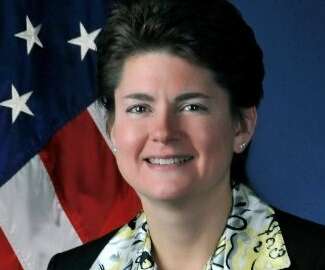
Moving to the cloud requires training workforce first, foremost
The University of Maryland University College wants to fill a void with a new Master’s program in cloud architecture and management.
The Small Business Administration’s move to the cloud has been fairly smooth, but the one area where the agency is finding a major challenge is a common one. SBA, like many other agencies, can’t find enough well-trained workers to oversee and manage its new cloud infrastructure.
Maria Roat, the Small Business Administration’s chief information officer, said as her office modernizes the agency’s IT infrastructure, the need for training around the network, engineering and the security as well as w cloud architecture and how to support that is growing.

“We are having to train people. Whether it’s offering training in house or getting them to courses, some of the free training offered around town, getting them engaged in all that training is really important regardless of where you get it,” Roat said on Ask the CIO. “It’s good to have the formal programs as well as the informal ones where you learn from your peers.”
She said her IT staff needs to know more than just how to do a “lift-and-shift,” but all the upfront planning particularly around operations of apps and systems in the cloud.
That’s where the University of Maryland University College comes in. UMUC recognized that shortcoming and is offering a new Master’s program in cloud architecture and management.
Pete Young, a senior vice president of analytics, planning and technology at UMUC, said after he led an effort to move the university into the cloud, the need for well-trained staff was more evident.
He said UMUC recognized there is a huge skill gap and unmet demand for IT workers with a deep understanding of cloud computing.
So this fall, UMUC will launch a new Master’s degree program around cloud computing architecture.
“We brought in a variety of experts across the employer space, the federal government space to help identify what specific skills and capabilities will be needed by these graduates, and then we work backwards from understanding what they will need to do and then we design courses, programs and projects, which we are very much an experiential program, that can actually ensure that when these students graduate they have the demonstrated skills necessary to succeed in the roles that Maria and I experience in our own native organizations,” Young said. “Our program is really based on our experience of the difficulty of finding and retaining qualified staff and just as important the development of existing employees. There are very few programs around cloud available, which was one of the reasons why we decided to start this program, although many programs have elements of this. This is really a cloud focused program.”
The Master’s program for cloud requires students to complete six, six-credit courses. A student taking it part-time can finish in two years.
It costs $16,5000 for Maryland residents, and less than $18,000 for federal employees, their spouses and dependents if they don’t live in Maryland, but go through the Office of Personnel Management’s College Alliance program.
Young said the online courses include cloud management, focusing on the principles and practices about managing in a cloud environment; cloud infrastructure planning, design and configurations; and cloud orchestration, which has the students designing, planning, implementing and doing a complete cloud migration.
“It’s all project based so these are authentic, learning demonstrations that they actually are being equipped to understand the concepts and given the tools to do the activity and iterate the project through to a satisfactory completion,” he said. “These are more practical skills. It’s not an absolute kind of issue. Things shouldn’t be purely in the cloud or purely on-premise, everyone has to make decisions around what makes the most sense. This program is really designed to help them think through all the reasoning and rationale for what should move, what should it move and how to make a compelling case argument, and then how to fundamentally design and implement that.”
Roat said one of the things that is foundational for understanding cloud is to grasp how the data moves and how employees use the information to meet mission needs.
She said knowing whether the data needs to be encrypted at-rest, in transit or both are key facets in developing the architecture.
Young added that while the Master’s degree program is focused on the cloud, it does pull from other disciplines such as cybersecurity, data analytics and project management.
Roat said training like what UMUC is offering is important to the federal CIO community.
She said her training budget at SBA isn’t large, so it’s important for the employee to take charge of their career when it comes to learning new skills.
“To maintain relevance, to continue to further your education, it doesn’t matter if you’re young or old or middle-aged, you own your career. You have a responsibility if you want to continue in this field to remain relevant,” Roat said. “You do have to go out and get training on your own. There is only so much that I can do. I will offer free training, pay for what I can, but employees own their career and own their training.”
Roat said she will help spread the word about the program through the CIO Council and through other communication channels in the federal IT community.
UMUC also is holding several webinars about cloud and the Master’s degree program in September.
UMUC reached out to Roat, who graduated from university, as they sought to hear from public and private sector experts.
“We had a conversation, much like they did, I’m sure, with a number of other folks as they were building it out, about what the requirements are for the workforce, what do I need as a CIO to be able to move into the cloud and support that,” she said.
Wilson added that UMUC engaged a variety of experts while developing the courses, and will continue to reach out as cloud continues to develop and evolve.
“The workforce is so important on this,” Roat said. “One of the things we are getting ready to launch in the coming weeks is the strategic IT workforce planning for SBA.”
Copyright © 2025 Federal News Network. All rights reserved. This website is not intended for users located within the European Economic Area.
Jason Miller is executive editor of Federal News Network and directs news coverage on the people, policy and programs of the federal government.
Follow @jmillerWFED






